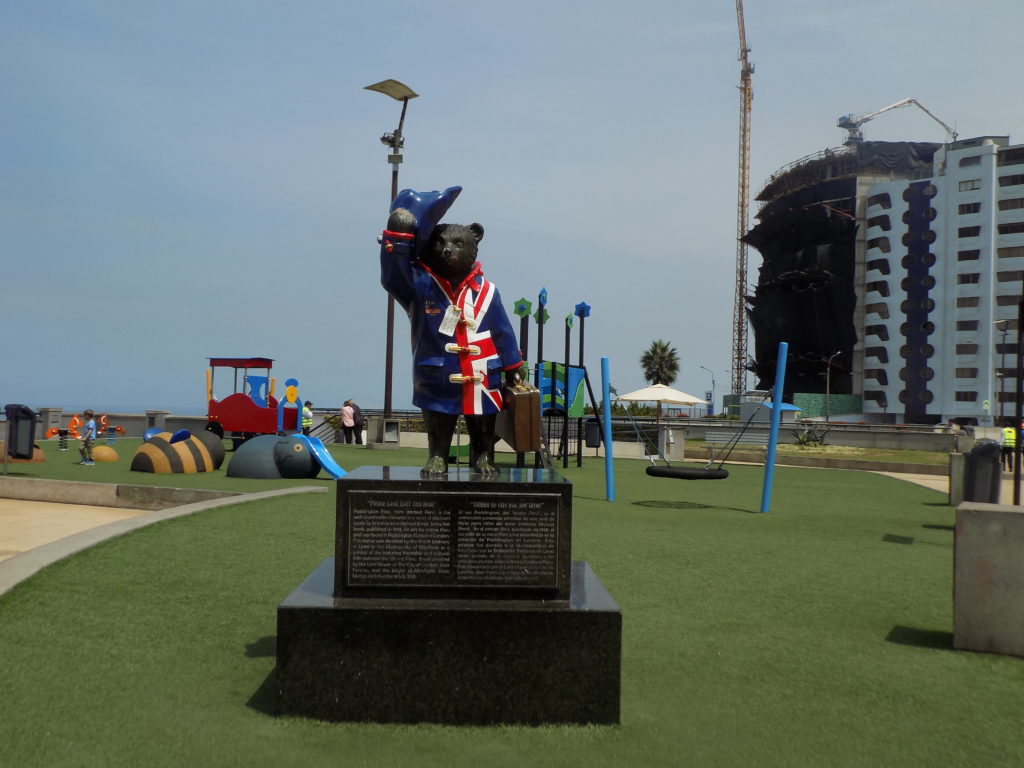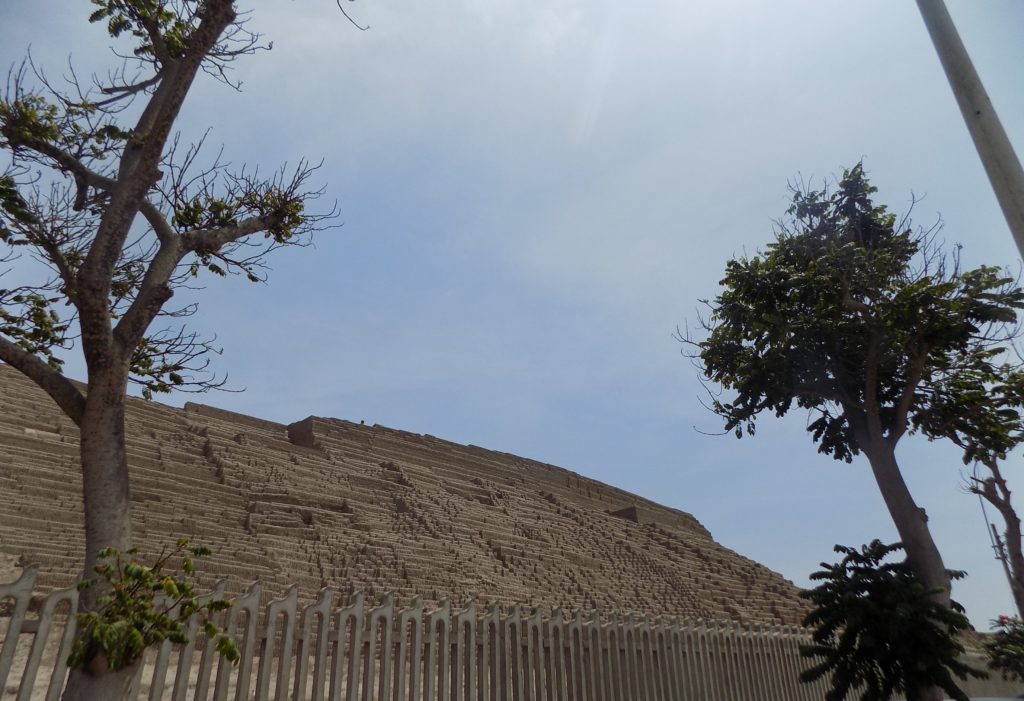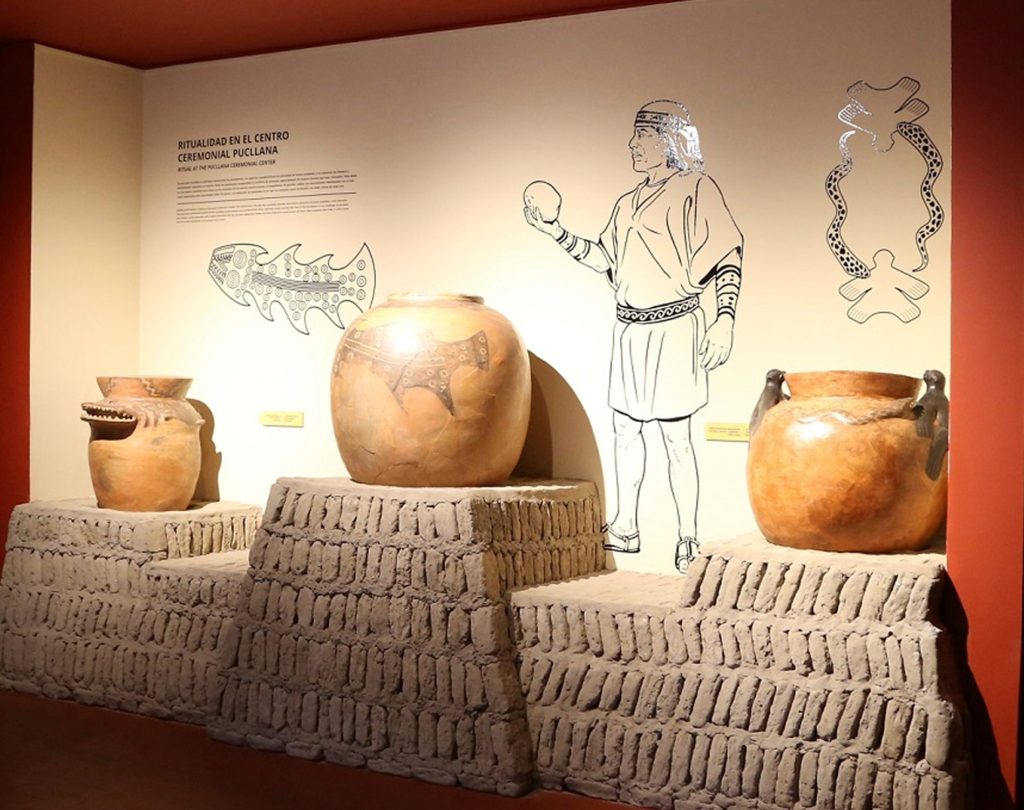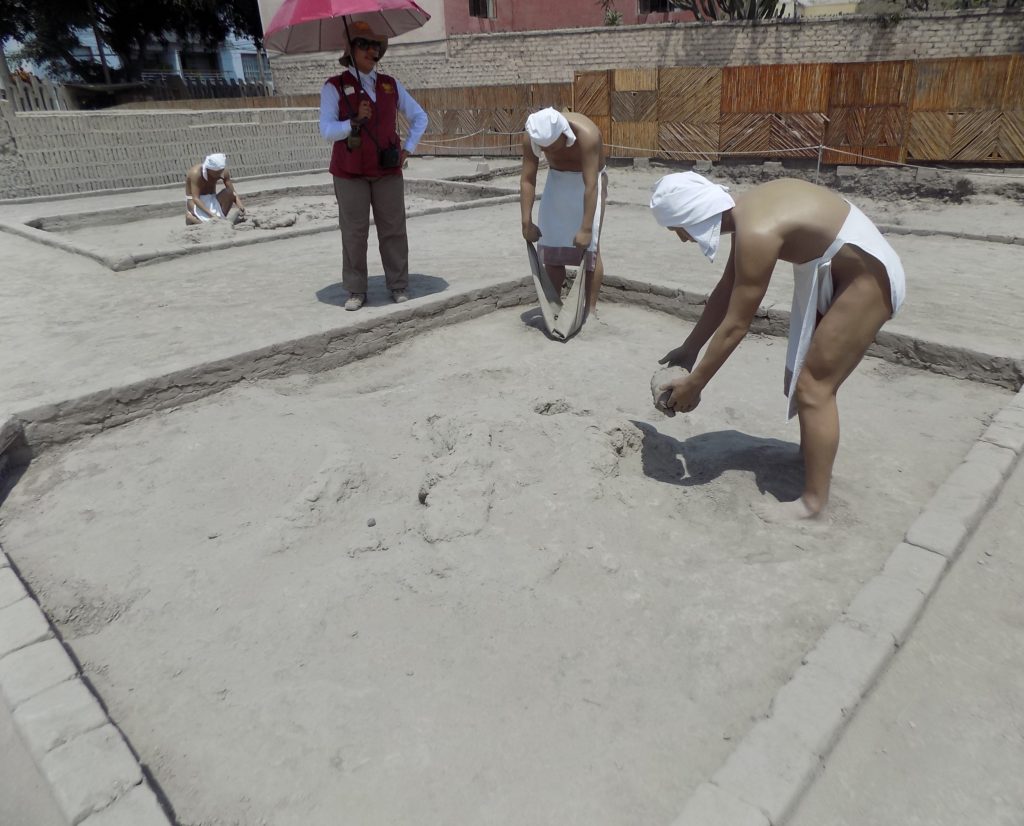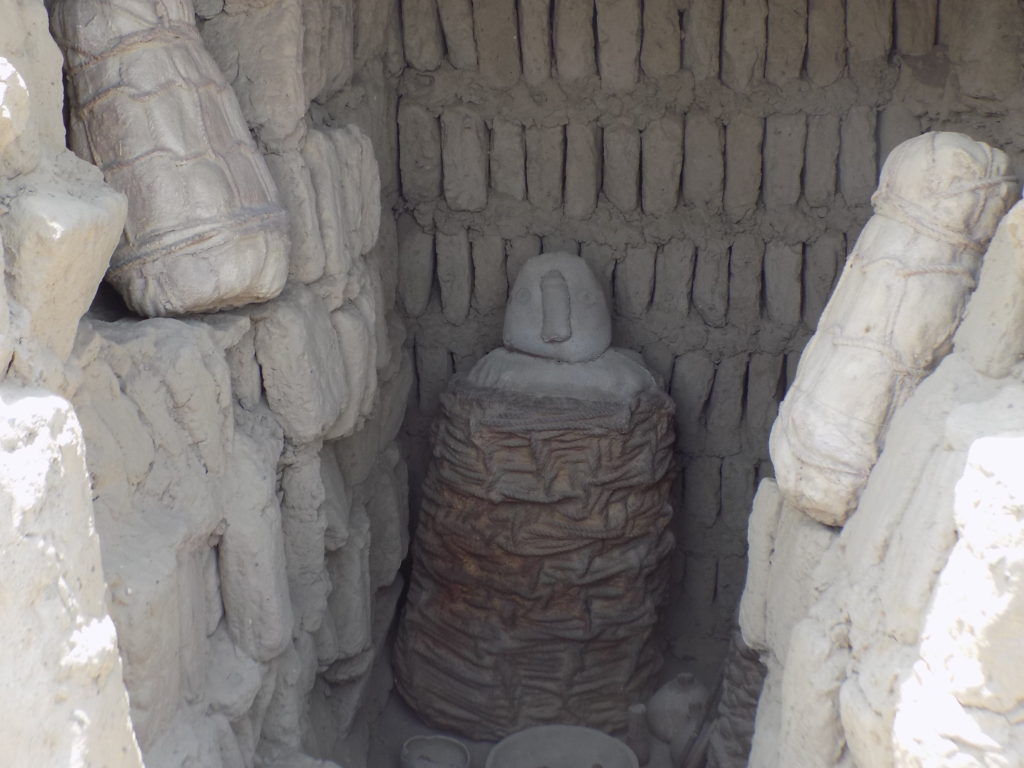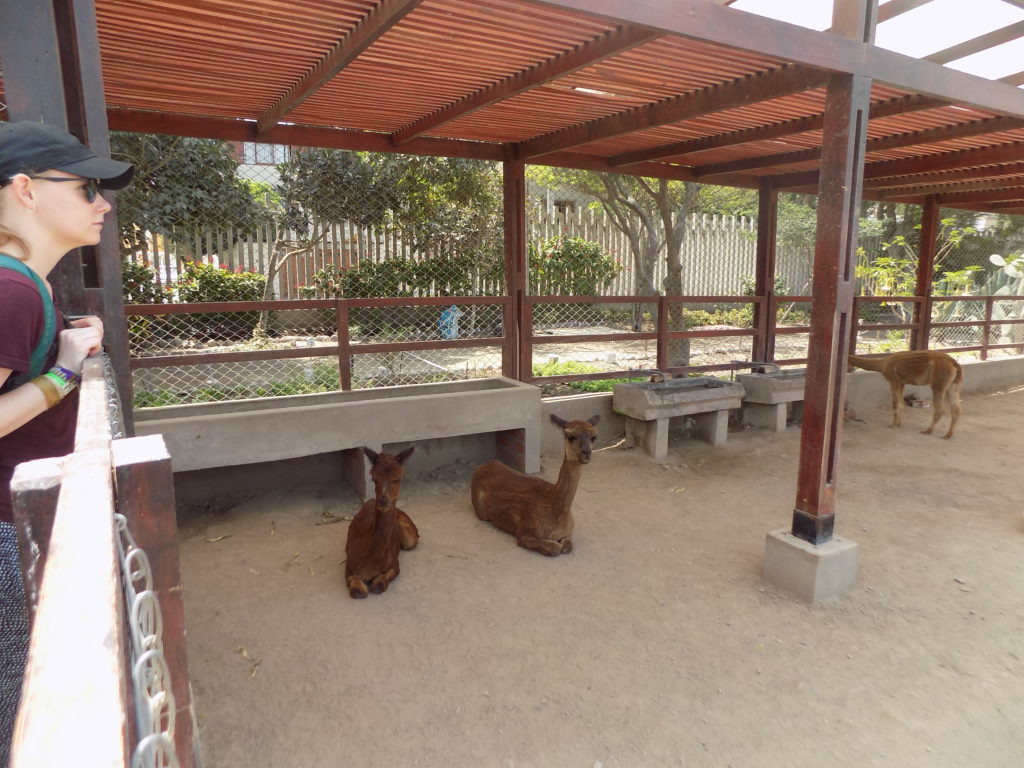As part of my post trip evaluation for Journey Latin America, I suggested that they make the second overnight stay in Lima (at least for those coming from Paracas) optional. I left Paracas late in the afternoon of 26 March and today is the 27th. I learned at the time I booked my return flight to the U.S., which is scheduled to depart Jorge Chávez Airport at 01:45 on the 28th, that flights to the east coast generally depart in this late night to early morning time frame. I further learned at the airport that nearly all the flights to the U.S. and most to Europe have similar departure times. Had JLA given me the option at the time I booked the trip, it’s possible that I would have continued on the bus from Paracas to the airport eschewing the extra night and day in Lima. This isn’t to say that I didn’t enjoy my day or that I found it uninteresting but the extra time presents some logistical issues and there’s also an undeniable pleasure in coming home after more than three weeks away.
The day began with a leisurely breakfast and my reunion with Jill. We waxed a bit nostalgic (already!) and regaled one another with tales of our individual adventures. While she’d soon be off to Santiago, Chile where she’d spend a day or two before jetting to Australia to visit family, I had few plans beyond walking about Miraflores, stopping at some places I thought might be interesting, and having at least one more meal of pollo a la brasa in the city of its creation. Breakfast is done so, let’s get started.
First the Bear
Since my transfer to the airport was scheduled for 21:00, I had a full day to explore at least some small part of Lima. Fortunately, Miraflores and its surrounding environs offer an array of sights and activities that allowed me to fill the day and satisfy my penchant for exploring cities on foot. Armed with a tourist map from the hotel and my phone’s GPS, I set off for Parque Alfredo Salazar.
(Parque Alfredo Salazar honors a young aviator whose plane suffered engine failure while he was rehearsing for an air show in 1937 planned to honor Jorge Chávez – for whom the airport is named. Salazar forced his navigator to parachute out of the plane and he then piloted it away from populated areas before he crashed to his death near the park that now bears his name.)
The park sits on the cliffs above the Pacific Ocean and is just a few blocks from the hotel. It’s part of a 10-kilometer string of parks along the cliffs collectively called El Malecón and, though it has some delightful views of the ocean, I was hunting for a bear. Actually, I was seeking
a Paddington Bear. I don’t know if this was the spot in “darkest Peru” from which Pastuso first stowed away but it is to Miraflores he has returned.
Then the Cats
Deciding to forgo an extended walk through the parks of El Malecón, I turned away from the ocean and set my course for the center of the district what was at one time called Parque Central but that now has two distinct divisions. One section, el Parque 7 de Junio honors the nearly 1,000 Peruvian soldiers who died in Battle of Arica in an unsuccessful attempt to repel Chilean invaders on 7 June 1880 during the War of the Pacific.
Another part of the park is now named El Parque Kennedy in honor of the 35th President of the United States. It bears his name because of the aid that came to Perú under the aegis of the Alliance for Progress that Kennedy initiated in 1961 to promote economic cooperation between the U.S. and Latin America. It’s a particularly lively park known for its collection of street vendors, artists, and the Chabuca Grande Amphitheater where there are frequent performances by musicians and dancers. However, despite all those attractions, Kennedy Park is probably best known for the more than 100 stray cats that wander about and panhandle food (usually gently but sometimes aggressively) from locals and tourists. I took a few photos but think this video does a much better job of capturing the feeling of the park.
I spent some time interacting with those cats who were interested in interacting with me although I’m glad cats can’t read minds because even as I sat stroking the small chap curled comfortably on my lap, I was thinking not about him (or her) but about my own cat Zicomo and our reunion the next day. Eventually it was time to move on.
An urban surprise
Next on my list was a visit to an archaeological site in the heart of Miraflores called Huaca Pucllana. Given Lima’s sprawling growth it’s a bit surprising that this ancient site – a mere 1.5 kilometers from Kennedy Park – seems to have been more or less ignored until 1981. The initial description of the ruins depicted them as little more than a mound of soil with stones sticking out at various points but, over the ensuing three years, careful excavation revealed a substantial 1,300-year-old complex that appears to have been a ceremonial and administrative center for the group historians now call the Lima people. (The museum at the site, established in 1984, has since expanded to include a small indoor facility and it received recognition – though few public funds – as part of the National System of State Museums in 1989.)
As happened to me in Malta, I found it a bit disorienting to visit a site of such antiquity surrounded by encroaching urban construction and modernity.
The most prominent feature of the complex is the seven-tiered flat-topped adobe pyramid. I first saw it from this angle
as I approached the outside of the site. It’s generally believed it was originally built by the Lima culture that flourished from about 200 – 700 C.E. They are typically depicted as a mainly hunter-gatherer society that was greatly influenced by their proximity to the ocean and whose principal deities were sea gods. The Lima culture is also known for producing pottery vessels and bricks. The former, used for cooking, food storage, and perhaps burials, were decorated with stylized ocean motifs that are presumed to be representational of their religious beliefs.
Brick production, of course, allowed them to erect the structures seen there.
In about 700 C.E., the Lima were subsumed by the Wari who appear to have mainly utilized Huaca Pucllana as a burial site. Mummified human remains including those of children who, it’s thought, were sacrificed to a sea goddess can be found throughout the site. According to the guide, the location of mummies indicates that the burials were reserved for the elite class.
Traces of food found in some of the surviving vessels could have been a form of offering but they also likely provide clues to the diet of the local people who consumed mainly maize, beans, and various types of squash to accompany local fish and crustaceans. The presence of mate and quinoa and bones of guinea pigs and llamas indicates they traded with the Andean cultures.
Huaca Pucllana was largely abandoned after the collapse of the Wari empire and, though the Ychsma – one of the area’s local groups – used it for offerings and occasional burials, weather and erosion had caused considerable deterioration by the time the Inkas arrived in the 15th century. Some 16th century Spanish commercial documents refer to the site as simply Pucllana.
